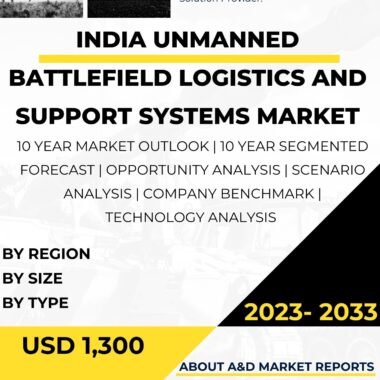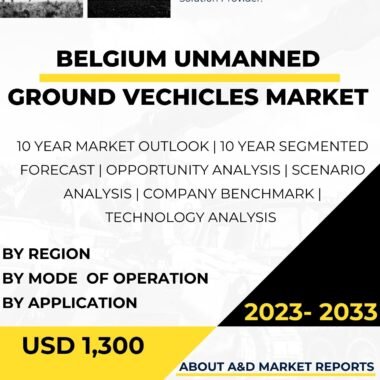Description
The South Korea unmanned battlefield logistics and support systems market is a critical and rapidly advancing segment of the country’s defense industry, providing advanced unmanned systems that enhance military logistics, supply chain management, and support operations in the battlefield. Unmanned battlefield logistics and support systems play a pivotal role in modern warfare by improving the efficiency, safety, and responsiveness of military support activities, ensuring troops are well-equipped, and enabling the timely delivery of critical supplies and equipment. South Korea’s focus on indigenous development, strategic partnerships, and technological innovation has positioned it as a notable player in the global unmanned battlefield logistics and support systems market.
Unmanned battlefield logistics and support systems encompass a wide range of unmanned vehicles and platforms, including unmanned ground vehicles (UGVs), unmanned aerial vehicles (UAVs), and unmanned underwater vehicles (UUVs). These systems are designed to automate and streamline various logistics and support tasks, such as transporting supplies, conducting reconnaissance missions, and performing maintenance and repair operations.
Indigenous development has been a cornerstone of South Korea’s approach to the unmanned battlefield logistics and support systems market. The country’s defense industry, represented by companies like Hanwha Defense and LIG Nex1, has made significant strides in developing advanced unmanned systems tailored to meet the specific requirements of the South Korean military.
The South Korean military heavily relies on unmanned battlefield logistics and support systems to enhance its operational efficiency and reduce the risk to personnel during logistics missions. These unmanned systems play a vital role in supporting troops, enabling them to focus on combat and mission-critical tasks while unmanned platforms handle logistical and support operations.
Beyond defense applications, unmanned logistics and support systems also have civilian uses in South Korea. Some unmanned systems, particularly UAVs, are utilized for civilian applications such as aerial surveying, disaster response, and environmental monitoring.
South Korea’s commitment to innovation and research and development (R&D) has driven significant advancements in unmanned battlefield logistics and support technology. The country invests in R&D programs to improve autonomous capabilities, sensor integration, and communication systems for unmanned systems. Technological improvements focus on enhancing navigation accuracy, payload capacity, and endurance of unmanned vehicles.
Strategic partnerships with international defense and technology companies have also contributed to South Korea’s unmanned battlefield logistics and support capabilities. Collaborations enable technology transfer, joint research, and the integration of foreign unmanned systems into South Korea’s indigenous platforms, enriching the overall unmanned battlefield logistics and support capabilities of the country’s defense industry.
To ensure optimal utilization and proficiency in operating unmanned battlefield logistics and support systems, South Korea places significant emphasis on training and skill development for its military personnel. Training programs focus on familiarizing operators with system controls, autonomous operations, and effective utilization in various operational scenarios.
Moreover, safety and reliability are paramount considerations in the unmanned battlefield logistics and support systems market, given the importance of ensuring the smooth operation of unmanned systems in challenging battlefield environments. South Korea adheres to stringent safety protocols and system maintenance standards to ensure the reliability and performance of unmanned systems, minimizing the risk of mission failure and maximizing the safety of military personnel.
In conclusion, the South Korea unmanned battlefield logistics and support systems market is a critical aspect of the country’s defense capabilities. Indigenous development, strategic partnerships, and innovation have allowed South Korea to create advanced unmanned systems that meet the specific needs of its military and contribute to enhancing its logistical efficiency and support operations. From autonomous supply transport to unmanned reconnaissance missions, unmanned battlefield logistics and support systems play a pivotal role in strengthening South Korea’s military capabilities and ensuring the effective support of its troops in the battlefield. As the defense industry continues to evolve, South Korea’s dedication to advancing its unmanned battlefield logistics and support technology will remain essential in maintaining its position as a major player in the global unmanned systems market.




